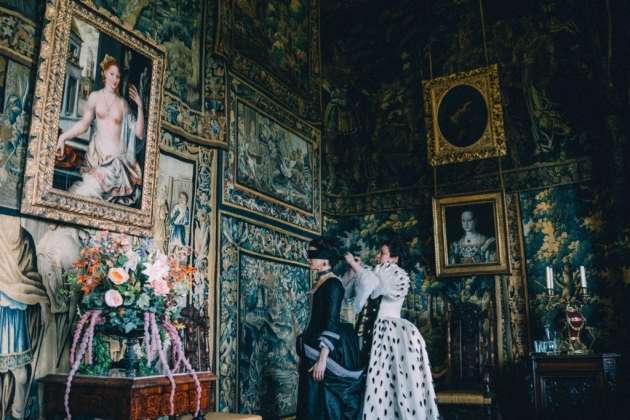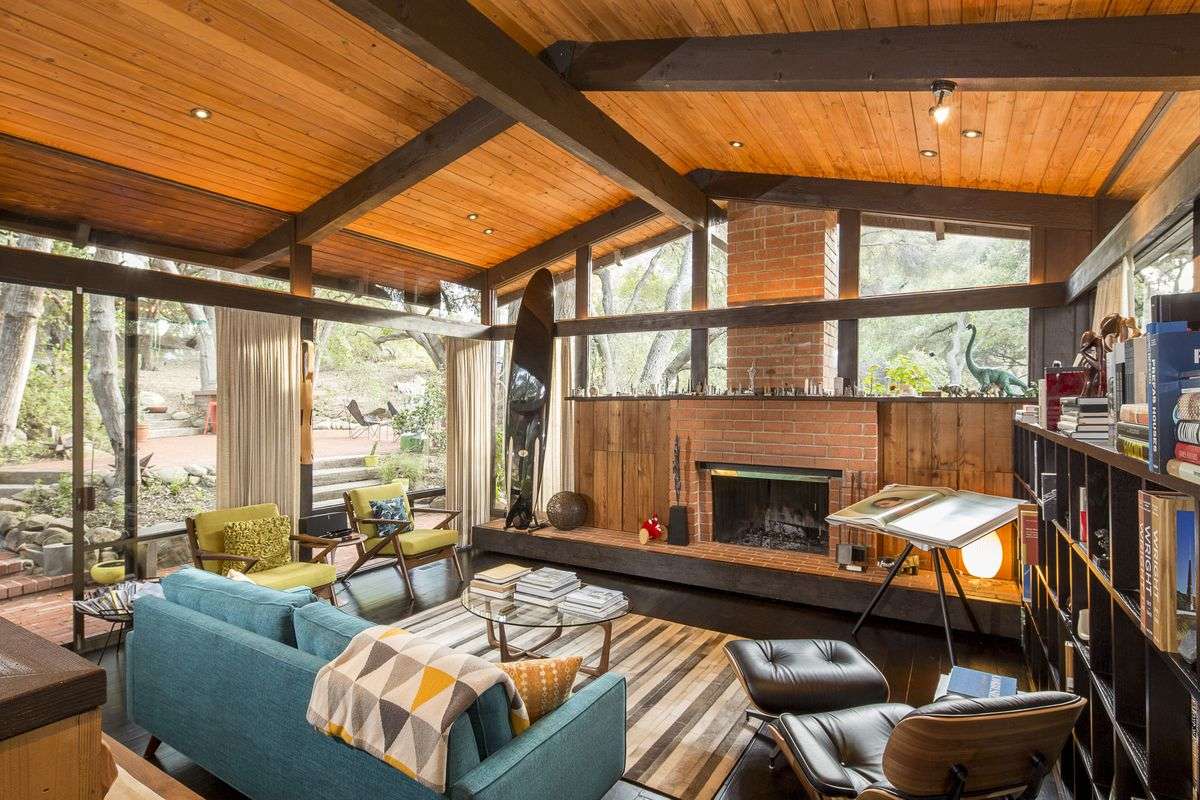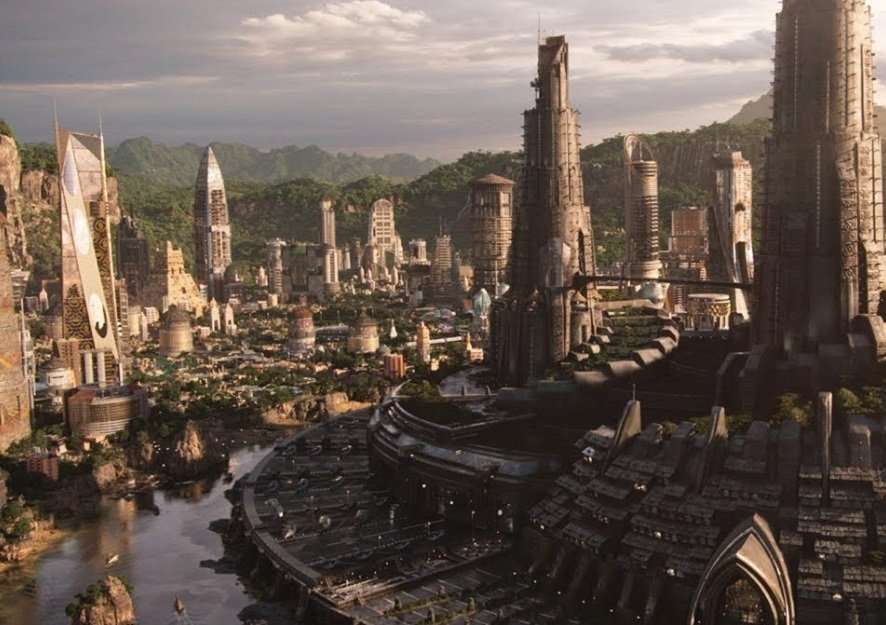A nostalgic recreation of 1970s Mexico City, an extraordinary afro-futurist city inspired by the architecture of Zahir Hadid, Buckingham Palace and a Korean fish market, a cool woodsy mid-century home in the woods: this year’s Oscar-nominated best movies have enviable architectural style you could make your own.
Start in the early 18th century with Yorgos Lantimos’ The Favourite, the story of two cousins vying for the attention of Olivia Colman’s Queen Anne, and borrow from two of British tourists’ favourite palaces - Hatfield House in Hertfordshire and Hampton Court Palace in Richmond upon Thames.
To get the look, you’d have to start by pulling out all the light fixtures, relying only on moody daylight from vast stone windows and flickering candles for atmosphere (hundreds of them, you may need a footman or two to help; the movie production designers employed wax-catchers to meet modern fire safety standards). Plenty of enormous hallways, marble tiled floors, elaborate carved ceilings (Hatfield House’s date from 1611) and carved marble fireplaces as big as your spare room should set the scene. Hang reception rooms with priceless tapestries, your kitchen with several hundred copper pots (and room for live animals to be butchered outside) add flamboyant costumes and wigs and you’ll have nailed the look.

Start your property search
Hatfield House is the ultimate expression of baroque England. Photo / Fox Searchlight
Creep then into 1962 America of Green Book the story of a road trip through Jim Crow-era south by African-American classical pianist Dr Don Shirley with his Italian-American driver Tony Vallenlonga.
Depending on your taste, try Vallelonga’s working class Bronx apartment or Shirley’s exciting mini-palace above Carnegie Hall. Production designer Tim Galvin relied on the memories of Tony’s son Nick (who co-wrote the movie, which won best original screenplay) to recreate the family’s modest home. Shirley’s was one of many artists’ apartment in the Hall, a roster that included Marlon Brando, Marilyn Monroe, Leonard Bernstein and Robert Redford.
(The eviction of the last artists was document in a 2010 film, Lost Bohemia http://www.lostbohemia.com/carnegie-hall-studios/)
Bring in a grand piano, collections of objects from around the world (a throne, anyone?) and you have the extraordinary haven for a creative person of colour in a very white America.
The 1970s were where this year’s Oscar best movies hovered long and lovingly.
Bohemian Rhapsody co-stars 1970s and 80s London in sets that were carefully reproduced from band member Brian May’s huge collection of memorabilia and photos. Production designer Aaron Hayes brought every detail of Queen’s world to life, from massive stadiums like Madison Square Garden, to recording studios, right down to vintage guitars, cigarettes and lamps.
Freddie Mercury’s family home in Middlesex, has a 60s into 70s palette of the classic earthy colours - avocado, orange, brown - for his art-student bedroom. That morphed into the 1970s primary coloured disco palette, ending in the neon brights of 1980s of his later life.
The London flat that he shared with fiancé Mary Austin has exactly reproduced a classic Biba wallpaper (Mary worked for the design house that defined Bohemian 1960s and 70s London), furnishing it with the antiques, porcelains and Japanese art that Freddie loved to collect.
By contrast, the Colorado Springs 1970s of Spike Lee’s BlacKkKlansman, shows three different worlds: hip Ron Stallworth, the African-American policeman, the Ku Klux Klan member Felix Kendrickson’s dated life (and creepy Klan-centred basement) and the tired old precinct offices.
So sets vary from the Kendrickson’s stale and dated 1950s home - signalling his ignorant and dated views - to Stallworth’s apartment’s lush, crazy 70s pattern mix and colours (an original apartment the set designers lucked into when they were scouting), to the run-down 1960s furniture of the police office.
But it is Eugenia Caballero’s extraordinary rebuild of 1970s Mexico City for Alfonso Cuarón’s Roma, winner of Best Foreign Language Film, that is almost a character in itself. The pair recreated the period - right down to colours, even though the movie is shot in black and white - including rebuilding the Cuarón’s 1930s family home to the last inch. Set directors located much of the home’s original furniture scattered amongst relatives, going as far as filling drawer and cupboards with bits from 1940s,50s and 60s, much as a family would accumulate stuff over time.
A Star is Born might be a thoroughly modern nod to early versions of the star-discovers-nobody, nobody-eclipses-star movie, but it is Brad Cooper’s star house in the hills of Calabasas, north west of Malibu, that got Twitter excited. It’s woody mid-century vibe and woodsy location is meant to show the country singers’ low key personality, a Californian success-story version of the country-boy cabin.

The 1970s home that featured in A Star is Born sold last year for US$2 million. Photo / Brian Linder/The Value Of Architecture
In a neat only-in-Hollywood twist, the architect who designed the 1973 house, Douglas Rucker, also designed a house for the star of the 1976 A Star is Born, Kris Kristofferson. It sold for over $2 million, carefully renovated to make the most of the vaulted and beamed ceilings.
For Vice, the story of Vice-President Dick Cheney, designers had to build up the story of the man who helped invade Iraq from his modest rustic, family home through his rise though to the West Wing of the White House - all five versions of it, through the five administrations he served. Set decorator Jan Pascale tapped into another only-in-America Facebook group, White House by Design, where curators and other people in the know, fed details and insider looks.
But it is Handy Beachler’s entire futuristic city and landscape for Black Panther that may be hardest to reproduce at home. She scouted South Africa for landscapes, textiles and colours that brought Marvel Comic’s city of Wakanda to life. South Korea inspired the neon signs that went into the casino.

Afrofuturism dominates the architecture in the fictional country of Wakanda in Black Panther. Photo / Disney
The voluptuous curves of the late Iraqi-British architect Zahir Hadad’s modern buildings blended with the rounded thatch-roofed rodavel huts to inspire the city’s towers, while the exact scale of Buckingham Palace (359 feet by 486 feet, if you want to do this at home) determined the size of the Black Panther’s palace - and thus the size of the surrounding city.
Teams of illustrators and set designers turned photos and ideas into finished sets, and the movie has already inspired a cultural movement: Afrofuturism, a combination of African and diaspora culture with tech and science fiction.
And the Production Design winner is: Hannah Beachler and Jay Hart, Black Panther. Ruth E Carter also picked up the Costume Design gong.









































































